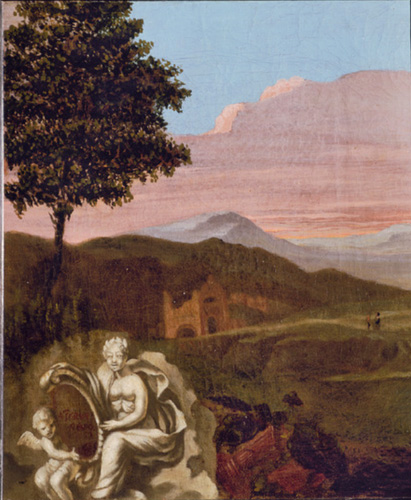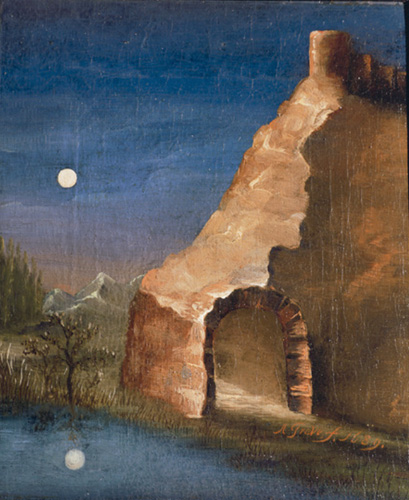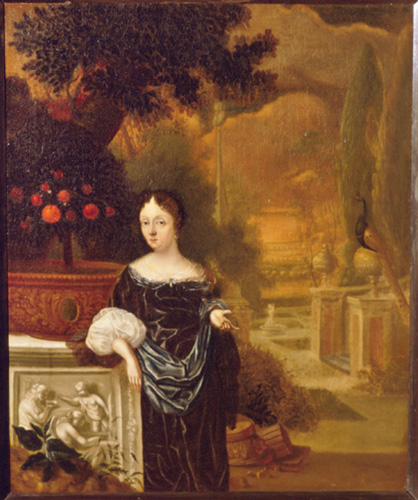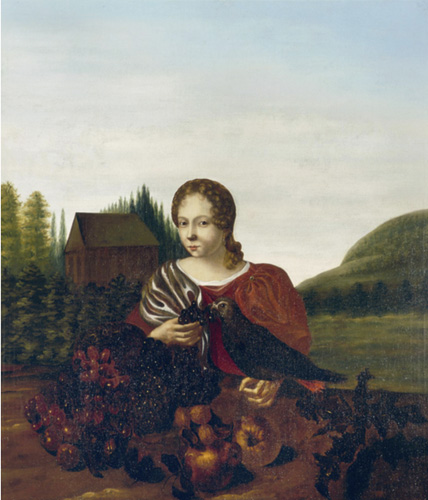Aleida Greve
Active in: The Netherlands
Biography
Aleida Greve was born in Zwolle, the Netherlands, in 1670 to Geurt Greve, a brewer, and Lamberta Holt. Her family was a prominent part of the regent class in Zwolle. Aleida’s elder half-sister was the painter Cornelia van Marle (1661–1698). The painter Aleida Wolfsen (1648–1692) was Greve’s older cousin, and it has been speculated that Wolfsen taught Greve and their mutual female relatives. Along with her other cousins, Sophia Holt (1658–1734) and Anna Cornelia Holt (1671–1692), Greve also studied under the painter Wilhelmus Beurs (1656–1700).
Few of Greve’s paintings remain. Indeed, only six signed works have been catalogued: two landscapes, three portraits, and one still life. All of Greve’s existing works are still on display in her former home, referred to as the “Vrouwenhuis.” Originally purchased by Greve as her home and studio, the building has since served as an apartment building and a museum as well as an exhibition space for women artists. Greve placed her own work in the Vrouwenhuis, along with works by Wolfsen and Van Marle. In her will, Greve stipulated that the sitting room’s paintings and furnishings remain intact, and the works remain in the Vrouwenhuis to this day. Te house subsequently became a retirement home for women, hence the name the building carries to this day. Greve, who never married, died in Zwolle in 1742. At the end of her life, Greve was the richest woman in Zwolle and one of the six wealthiest residents in the town.
Selected Works

Aleida Greve, Landscape with Sculpture, 1689. Oil on canvas, 25.6 x 21.7 cm. Vrouwenhuis Museum, Zwolle

Aleida Greve, Portrait of an Unknown Man, 1688. Oil on canvas, 65 x 56 cm. Vrouwenhuis Museum, Zwolle
Circle
Cousin of
Anna Cornelia
Cousin of
Sophia Holt
Cousin of
Aleida Wolfsen
Half-sister of
Cornelia van Marle
Student of
Wilhelmus Beurs
Bibliography
Beurs, Wilhelmus. De groote waereld in ‘t kleen geschildert, of schilderagtig tafereel van ‘s weerelds schilderyen, kortelijk vervat in ses boeken. Verklarende de hooftverwen, haare versheide mengelingen in oly, en der zelver gebruik. Amsterdam, 1692.
Catalogus van de Overijssels-geschiedkundige tentoonstelling van 1882. Zwolle, 1882.
Honig, Elizabeth Alice. “The Art of Being ‘Artistic’: Dutch Women’s Creative Practices in the 17th Century.” Woman’s Art Journal 22 (2001): 31–39.
Huijsmans, Wim. “Melkmarkt 39. Drie huizen aan de Grote Aa.” In Stedelijk Museum Zwolle. Perspectieven. Zwolle, 1997.
Jong, L. de. “’Mijn vermaak en Kroone.’ Schilderessen in het Vrouwenhuis in Zwolle.” In Vrouwen en kunst in de Republiek: een overzicht. Hilversum: Verloren, 1998.
Moes, E. W. Iconographia Batava. Beredeneerde lijst van geschilderde en gebeeldhouwde portretten van Noord-Nederlanders in vorige eeuwen 1. Amsterdam, 1897.
Streng, Jean. “’Fraeye consten ende wetenschappen.’ Zwols cultureel leven in de zeventiende eeuw.” In Zwolle in de Gouden Eeuw. Cultuur en schilderkunst. Zwolle, 1997.
Ten Hove, Jan. Het Vrouwenhuis te Zwolle. Zwolle, 1994.
Van der Heijden, Pieter. “Zelfportret van een weldoenster.” Vitrine 10 (1997): 40–41.
Van Hall, H. Portretten van Nederlandse beeldende kunstenaars. Repertorium. Amsterdam, 1963.
Zwiers, Saskia. “De muiltjes van Aleida Greve.” Archeologie en bouwhistorie in Zwolle 5 (2005): 116–22.
Zwiers, Saskia. “Greve, Aleida (1670–1742).” http://resources.huygens.knaw.nl/vrouwenlexicon/lemmata/data/greve.



